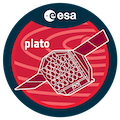Speaker
Description
As the Venus decade approaches, one of the outstanding questions to be addressed by the future missions that will investigate the hellish twin sister of the Earth, is what can Venus tell us about terrestrial potentially habitable exoplanets. Recent studies indicated that some exoplanets - both terrestrial and gaseous - may be characterized by dense atmospheres possibly rich in CO2, just like Venus. In the case of terrestrial exoplanets orbiting in the habitable zone of their solar system, this similarity gives us the opportunity of using Venus as a next door laboratory for the analysis of the geologic evolution of Earth-like exoplanets, to make assumptions about their habitability and - by comparison - to possibly reconstruct their geologic past. As Venus may have been habitable for a long time during its geologic past, other terrestrial exoplanets may have been or still be habitable too. To this regard, in 2026 the European Space Agency will launch the PLAnetary Transits and Oscillations of stars (PLATO) mission will study Earth-like exoplanets orbiting in the habitable zone of Sun-like stars. Five years later, in 2031, NASA will launch the Deep Atmosphere Venus Investigation of Noble gases, Chemistry, and Imaging (DAVINCI) mission, with one of its main objectives being that of investigating the vertical composition and structure of the atmosphere of Venus, to reconstruct its evolutionary history. In this perspective, the PLATO mission and DAVINCI mission can thus be considered as sister missions, with the PLATO mission looking for and analyzing potentially habitable terrestrial exoplanets, and the DAVINCI mission being the most reliable terrestrial exoplanets analog mission.

